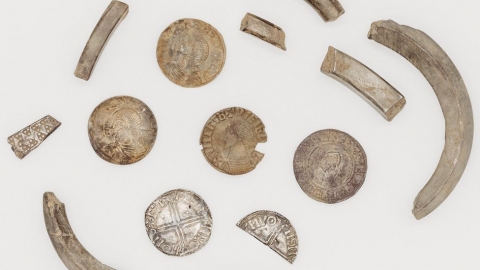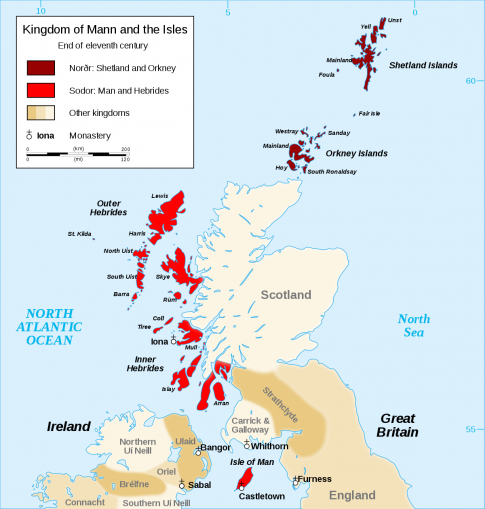Another Viking Treasure Hoard Discovered in Isle of Man

There is no doubt that the Isle of Man (Manx: Mannin), situated as it is the middle of the Irish Sea, was a strategically very important place during the years of Norse Viking rule. The Viking interventions began along the northern and western coast of Scotland and into the Irish Sea in the 8th century AD. The Isle of Man fell under Viking control in 1079 with the Vikings settlers integrating into the existing Celtic community. Many on the Island are proud of having a mixed Gaelic and Norse ancestry and culture. The Island's strategic position made it a nerve centre for trading in Viking times.
Over the years a number of archaeological discoveries have confirmed this strategic trading importance. Not least in the finding of Viking treasure hoards in the Isle of Man. A discovery of the Island’s latest Viking hoard was declared Treasure on 14th July 2021 by the Isle of Man Coroner of Inquests, Mrs Jayne Hughes. The latest hoard consists of 87 silver coins, 13 pieces of cut, silver arm-rings or “hack silver” and associated artefacts. It was discovered in April by metal detectorist Kath Giles whilst metal detecting on private land. This discovery marks the third major treasure inquest on the Island in less than six months. Most of the coins date from around the AD 990s through to the 1030s. Some of the coins have the profile of King Sihtric Silkbeard who served as Norse King of Dublin around 989 to 1036 AD.
The Islands of Scotland and the Isle of Man formed the Northern and Southern Isles. The Northern Isles of Shetland and Orkney were known to the Norse as Norðreyjar. The Southern Isles forming the Kingdom of Mann and the Isles (sometimes known as The Kingdom of the Isles) consisting of the Hebrides, the islands in the Firth of Clyde and the Isle of Man were known as Suðreyjar. This Kingdom lasted from the 9th to the 13th centuries AD. There is clear evidence of assimilation, with the Vikings being integrated by the Gaelic peoples and eventually speaking their Celtic language. The last King of Mann was Magnús Óláfsson, descended from a long line of Norse-Gaelic Kings who ruled the Isle of Man and parts of the Hebrides.
Image above: Latest Manx Viking Treasure Hoard image courtsey of Manx National Heritage (Manx: Eiraght Ashoonagh Vannin).
Image below: Kingdom of Mann and the Isles image courtesy of Wikipedia.







